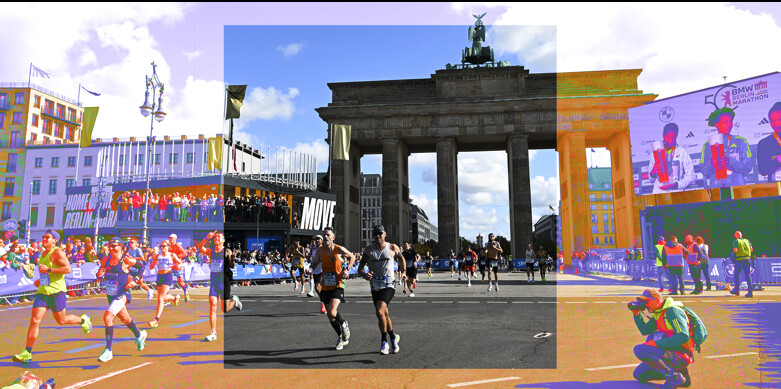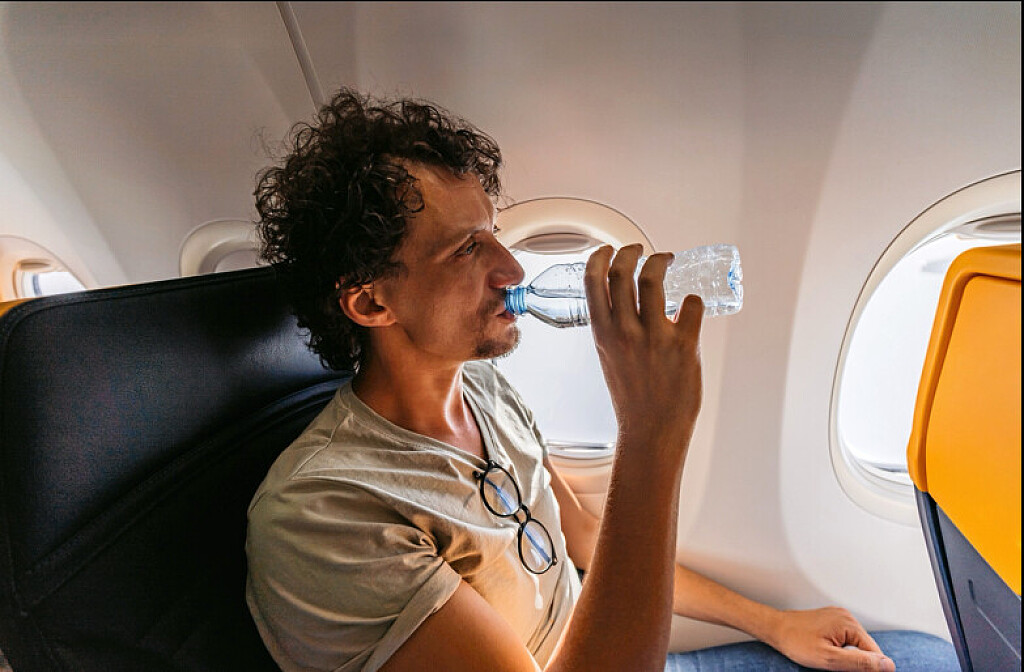Running News Daily
Running News Daily is edited by Bob Anderson. Send your news items to bob@mybestruns.com Advertising opportunities available. Train the Kenyan Way at KATA Kenya and Portugal owned and operated by Bob Anderson. Be sure to catch our movie A Long Run the movie KATA Running Camps and KATA Potato Farms - 31 now open in Kenya! https://kata.ke/
Index to Daily Posts · Sign Up For Updates · Run The World Feed
How to Plan for an International Marathon
AS RUNNING BOOMS and participation rates rise at races everywhere, people are looking to expand beyond their local fun runs for next-level experiences. International marathons in major cities—especially the six “World Majors” of Boston, Tokyo, London, Berlin, Chicago, and New York—have attained bucket list status on par with the most exotic vacation destinations, and more competitors are trying to join in than ever. More than 840,000 people submitted entries to the 2025 London race (for only about 50,0000 bibs), and the recent 2024 Berlin Marathon broke the record for the largest field ever with 54,280 finishers. I was lucky enough to be one of them, thanks to a comped bib from event sponsor Adidas. The atmosphere on the course was electric, and as I legged my way through the streets of the German capital, I couldn’t help thinking that it might be the best way to experience a foreign city.
But gaining entry into one of these races is just the start of a complicated process—and I’m not only talking about the months-long training program (most start at about 16 weeks out) athletes need to prepare for a marathon. The average holiday trip doesn’t involveWhen I set out to run Berlin I had finished three other marathons, but had never raced outside the US. I knew I’d have to take some extra effort, since factors like the time change, language barriers, and even the lack of familiar foods in local stores could throw off my routine right before the big day. But I wasn’t exactly sure about the best way to go about building an itinerary, so I turned to some experts so that my bucket-list race wouldn’t end in disaster. How to Plan for an International Marathon


NO MATTER HOW well-prepared you think you are to run a marathon fitness-wise, traveling to another country to compete will be a challenge, says Jessie Zapotechne a NYC-based performance coach and US community leader of Adidas Runners. She has run the Berlin Half and Marathon multiple times since 2012, and says she uses her experience from all those races to counsel runners for their own jetset trips. “To be quite honest, I think about these tips because of all the mistakes I've made over the years,” Zapotechne says. “That helps me to be a better coach from learning the hard way.”
Tommie Runz is a content creator and runner from Detroit. While there are events in his local area, almost all of his races have required travel. “I've done 14 marathons, and only one of them was in my state,” he says. Since we spoke, he added another to that list (Chicago), and he’ll finish out the season with New York City, hitting all six Majors in 2024. He’s also vegan—so he understands the challenges that come while traveling for anyone who has dietary restrictions.
These experts have consideredHaving those extra days will be important to allow you to recover from the flight, adjust to time and climate differences, and set yourself up for a good night’s sleep ahead of the big day. Less practically, an earlier arrival will give you a chance to take part in as much of the marathon experience as you can.Zapotechne also advises that you make one other early booking to avoid last-minute scrambling and high costs: dinner the night before the race. Aim for carb-heavy meals that won't upset your stomach, so resist the urge to try a new type of cuisine, even though you're in a foreign city. “Find a place that's nearby or accessible [to your hotel] so that you're going to have an early dinner and get back to your hotel, get off your feet, and have all your stuff ready,” she says. Aim for a sit-down meal two or three hours before you plan to go to sleep. "You don't want to have a late night dinner before your race," Zapotechne cautions. "You [might still be] digesting it in the morning, or [maybe] you can't go to the bathroom in the morning because you ate too late. And that's never fun."
Race Gear Gets Packing Priority
One of the most common marathon truisms is “nothing new on race day.” You’ll put that to the test if you show up to your destination and your checked bags containing your race day kit don’t. Limit the chances of gear emergencies by making sure yourOnce you’re on the ground at your destination, don’t ditch your bottle so quickly, either. “Definitely carry your water bottle around with you when you are out and about in that city—not every country drinks a lot of water,” Zapotechne notes.
In Berlin, for instance, I was surprised to find that normal still water isn't always easy to find. I constantly found myself making extra requests in restaurants or sorting through bottles of sparkling water to stay hydrated. International races often offer fewer aid stations on the course than American events—every three miles, rather than every mile, according to Zapotechne—so if you’re the type of runner who needs a drink before the three-mile marker, she advises starting the race carrying a bottle, too. Sleep Smart—and Be Ready for the Time Change
Sleep might not be your main concern when you’re trying to enjoy every bit of your time in another country, but you’ll need plenty of it for the long run. Similar to hydration, you should aim to start off your trip on the right foot even before you’ve left. “If you know you're not a great sleeper during travel, try to sleep a lot the week before, so that you're already getting your body ready for wonky travel sleep,” Zapotechne advises. There's no magic number for everyone, but try getting two or three extra hours in the days leading up to the flight if you can.
Along these lines, you’ll have to adjust to a different time zone, which can be jarring especially if you don’t travel often. “You have to almost start being aware of the time change before you even leave,” Runz says. Try going to bed and waking up to match that time zone for a day or two before the trip to acclimate. Then if your flight lines up with night time at your destination, he recommends you use the trip to get extra rest. “Take advantageThe actual number will depend on the person, but she says that range will still allow you to take plenty of time on your feet for stuff you need to do, like visiting the expo to pick up your bib and even for a short shakeout run, since you will need to loosen up after the flight and get acclimated ahead of the race. Just don’t go overboard, and avoid extraneous steps by taking a cab instead of legging it or standing in long lines at tourist traps. “Danger Zone for sure is when you're getting close to 20,000. That's too many steps,” she says.
I was able to go to a Saturday shakeout run within this structure, but skipped out on walking to the Brandenburg Gate before the race when my steps creeped up near the 10K mark. When I wanted to meet a friend for coffee, I rode a bike the mile to the café instead of hoofing it on foot.
If you’re at an impasse and struggling to fit everything you want to do before your race, that might be a sign to plan time for sightseeing after you run. “If you are going to plug inAlongside real-time translation, some apps like Google Translate have features that can use the camera to translate text, so you’ll be able to decipher what exactly is on a nutrition label. You’ll have an easier time getting last-minute fuel without something you can’t eat if you’ve taken the step to download the app (and download your destination’s label for offline use, too) ahead of time. Read the Forecast, But Plan for Anything
Weather can be a challenge anywhere, but you’ll especially need to be mindful of the conditions ahead of your race. “Make sure to check the weather in the city you are traveling to a few days in advance—and prepare that weather can change when you arrive, so pack clothing for all types of weather,” she says. You can get a decent idea what the conditions will be at three or four days out, but even a rough 10-day forecast will be useful if your itinerary is on the longer side. “Also make sure to put a warm or comfortable change of clothes and slides in your checked back for after the race, as you'll want something comfortable to change into after running 26.2,” Zapotechne advises.
Don’t get too distracted by high temps, either. You’ll need to also keep an eye on what the lows are slated to be, especially considering that you’ll probably need to leave for the corral early in the morning when the full heat of the day will still be hours in the future. You’ll likely spend more time outside when it’s colder—while trying to conserve yourThis was especially important in Berlin, and I almost missed my wave because I didn't heed this advice. The race organizers had worked to make it the biggest marathon of all time—and in doing so, the staging area was a madhouse. People were packed in small areas, and signage wasn’t always clear. I arrived at the crush of people 15 minutes ahead of the gun, and found myself pushing through the crowd and climbing over barriers to get to my proper pace group. That took up a lot more energy and effort than I wanted before I was slated to run for three-plus hours.
Ultimately, it’s up to you to get to the starting line. Runz knows there are no hacks once you near zero hour and everyone is raring to go, especially as running has grown so much over the last few years. “Every race is going to be like this—until the streets get bigger,” he says.
by Men’s Health
Login to leave a comment




